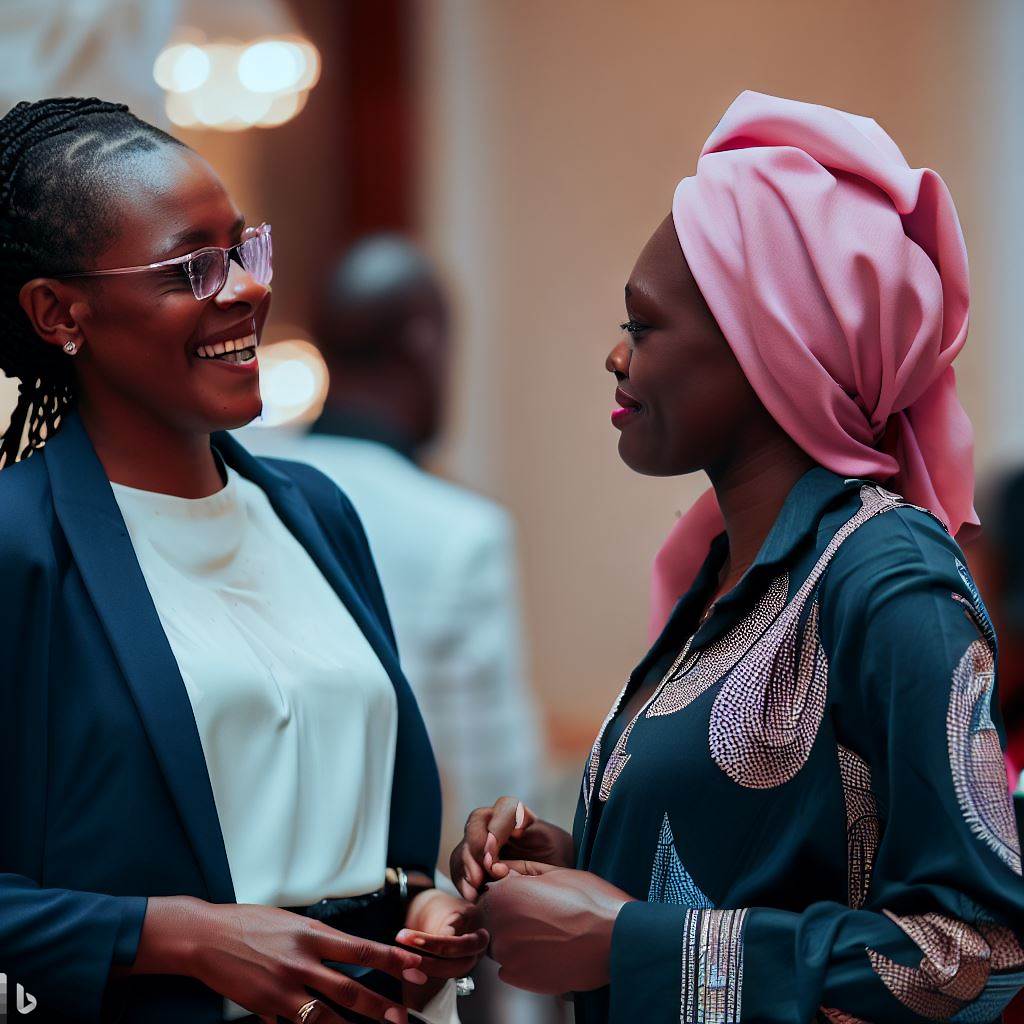Introduction
Cultural influences play a vital role in shaping the interior design in Nigeria. From vibrant colors to traditional motifs, Nigerian culture has a profound impact on how spaces are designed and decorated.
In this blog post, we will delve into the fascinating world of Nigerian interior design, exploring the various cultural elements that shape it.
Get ready to experience Nigerian aesthetics, where tradition and modernity blend to create a mesmerizing interior design style.
By examining the cultural influences on interior design in Nigeria, we gain a deeper appreciation for the
Historical Overview of Nigerian Interior Design
In order to understand the origins and influences of interior design in Nigeria, it is important to delve into its historical background and the impact of indigenous Nigerian cultures on its practices.
This section will also highlight key historical periods and events that have shaped the development of Nigerian interior design.
1. Historical Background of Interior Design in Nigeria
Interior design in Nigeria has a rich and diverse history that dates back to ancient times.
The country’s interior design practices have been influenced by various factors, including cultural beliefs, colonization, and globalization.
The earliest forms of interior design in Nigeria can be traced back to the indigenous cultures such as the Igbo, Yoruba, and Hausa.
These cultures had their own unique architectural styles, which influenced the design and decoration of interior spaces.
During the colonization period, Nigerian interior design saw a significant shift as Western influences started to take hold.
European architectural styles, such as Victorian and Georgian, were introduced and incorporated into Nigerian design aesthetics.
With the advent of globalization, Nigerian interior design has become more diverse and cosmopolitan.
There is now a fusion of traditional and contemporary design elements, resulting in a unique Nigerian aesthetic.
2. Influences of Indigenous Nigerian Cultures on Interior Design Practices
Indigenous Nigerian cultures have played a vital role in shaping the interior design practices of the country. Each culture has its own distinct design elements and patterns that reflect their traditions, beliefs, and values.
The Igbo culture, for example, is known for its intricate wood carvings and decorative motifs. These elements are often incorporated into interior spaces, adding a touch of cultural heritage.
The Yoruba culture, known for its adire textiles and vibrant patterns, frequently employs these fabrics in interior decor, including upholstery and curtains.
Similarly, the Hausa culture has influenced Nigerian interior design through its traditional architecture characterized by intricate mud brick work, ornate carvings, and vibrant textiles.
3. Key Historical Periods and Events that Shaped Nigerian Interior Design
Several key historical periods and events have played a significant role in shaping the development of Nigerian interior design.
The pre-colonial era saw the emergence of the indigenous architectural styles and design practices that formed the foundation for Nigerian interior design.
This period laid the groundwork for future influences and developments.
During the colonial era, Nigeria was under British rule, and this had a profound impact on interior design.
European architectural styles and design principles were introduced and implemented in public buildings and private residences.
The post-colonial era emphasized a return to Nigerian cultural heritage and traditions.
This period witnessed a resurgence of interest in indigenous design elements, leading to the incorporation of these elements into interior spaces.
In recent years, Nigeria has experienced rapid urbanization and economic growth. This has led to a rise in contemporary design styles and an increased demand for modern, functional interior spaces.
Basically, Nigeria’s interior design has evolved over time, influenced by a combination of indigenous cultures, colonial legacies, and globalization.
The historical background, influences of indigenous cultures, and key historical periods and events have all contributed to shaping the unique and diverse interior design practices in Nigeria.
Read: Salary Expectations for Interior Decorators in Nigeria
Traditional Nigerian Interior Design Elements
Nigeria is a country rich in cultural heritage, and this is reflected in its interior design. Traditional Nigerian interior design elements are deeply rooted in the country’s history and customs.
These elements are not only aesthetically pleasing but also hold great significance and symbolism.
Significance and symbolism associated with these elements
Use of vibrant colors
One of the most prominent traditional Nigerian interior design elements is the use of vibrant colors.
Nigerians believe that colors have the power to evoke certain emotions and energies, so they incorporate a wide range of bold and bright hues into their homes.
From rich earthy tones to vibrant yellows and oranges, every color has a specific meaning and purpose.
Use of indigenous materials
Another traditional design element is the use of indigenous materials. Nigerians have mastered the art of incorporating locally available materials into their interiors.
Clay, wood, bamboo, and rattan are commonly used for furniture, while adire fabric and cowrie shells are used for decorative purposes.
These materials not only add a touch of authenticity but also reflect the country’s connection to nature.
Geometric patterns
Geometric patterns are also prevalent in traditional Nigerian interior design. These patterns, known as adinkra symbols, are often used to communicate social messages and moral values.
Each symbol has its own meaning and significance, and they are intricately woven into various design elements like textiles, pottery, and wall art.
In Nigerian homes, traditional religious beliefs play a significant role in interior design. For instance, the Yoruba people believe in ancestral worship, so it is common to find altars or shrines dedicated to ancestors.
These spaces are adorned with artifacts, statues, and symbolic objects that hold spiritual significance.
One iconic design feature in Nigerian homes is the use of tribal masks and sculptures. These art pieces not only add a touch of culture but also serve as a reminder of the country’s rich history and traditions.
Masks and sculptures are often displayed on walls or shelves, creating a focal point in the room.
Nigerian interior design also embraces the concept of communal living. Nigerian homes are often designed to accommodate extended families and guests.
The living room, known as the “parlor,” is the heart of the home and is designed to be spacious and welcoming. It is where families gather, entertain guests, and engage in cultural activities.
Examples and visuals to illustrate various traditional design features used in Nigerian homes
To illustrate these traditional design features, here are some visuals and examples. Imagine a living room with walls painted in warm earthy tones like terracotta and ochre.
The furniture is made of dark wood with intricate carvings and adorned with vibrant adire fabric cushions.
On the walls, you can find woven tapestries depicting adinkra symbols, and a tribal mask hangs above the fireplace.
In the dining area, a handcrafted wooden table is surrounded by rattan chairs and adorned with cowrie shell placemats.
Colorful pottery is used as centerpieces, and the walls are decorated with traditional art pieces like sculptures and paintings.
Generally, traditional Nigerian interior design elements are a reflection of the country’s cultural heritage and customs.
From vibrant colors to indigenous materials and symbolic patterns, these design elements hold great significance and add a unique touch to Nigerian homes.
Embracing these elements not only creates a visually stunning space but also pays homage to Nigeria’s rich history and traditions.
Read: Nigeria’s Interior Design Market: Opportunities and Challenges
Colonial Influence on Nigerian Interior Design
During the era of colonial rule in Nigeria, the country experienced a significant transformation in its interior design.
The presence of colonial powers introduced new design elements and materials that merged with traditional Nigerian design, giving birth to a unique hybrid style.
Impact of Colonial Rule on Nigerian Interior Design
The colonial rule brought European design aesthetics to Nigeria, influencing the way interiors were perceived and created.
British colonial powers introduced new architectural styles, such as neo-classical and Victorian, which became popular among the elite.
Furthermore, the colonizers also introduced modern building techniques like reinforced concrete and steel structures.
These techniques enabled the construction of larger and more sophisticated buildings, influencing the design of interior spaces.
The use of imported materials played a significant role in shaping Nigerian interior design during the colonial era.
Architects and designers actively integrated materials like glass, ceramic tiles, and wrought iron into architectural features, furnishings, and ornaments.
In addition to materials, the colonizers brought Western furnishings, including chairs, tables, and cabinets, which replaced traditional Nigerian furniture.
These new pieces brought a touch of modernity and functionality to interior spaces.
Integration of Colonial Influences with Traditional Nigerian Design
Despite the influx of colonial influences, Nigerian interior design managed to retain its cultural identity.
The design actively incorporates traditional Nigerian themes and motifs, fostering a strong connection to the local culture.
Moreover, Nigerian craftsmen skillfully blended colonial and local craftsmanship to create a unique style.
Craftsmen blended European design principles with traditional woodworking techniques, creating furniture and architectural elements that elegantly fused both influences.
The adaptation of colonial architecture to the local climate was another significant aspect of Nigerian interior design.
The introduction of verandas, high ceilings, and large windows allowed for better ventilation and natural light, making the design more suitable for the Nigerian environment.
Despite the colonial rule, Nigerians made efforts to preserve their cultural identity through interior design.
Traditional patterns, colors, and materials continued to be used, ensuring that the designs still reflected the richness of Nigerian heritage.
Essentially, the colonial era had a profound impact on Nigerian interior design, introducing new design elements, materials, and architectural styles.
Through the blending of European and traditional Nigerian influences, a unique hybrid style emerged, preserving cultural identity while embracing modernity.
Read: How to Get Certified as an Interior Decorator in Nigeria

Modern Trends and Global Influences
Nigeria, like many other countries, is experiencing a shift in interior design trends.
The globalization of design has opened up opportunities for Nigerian designers to incorporate modern concepts with traditional elements.
Here are some of the current trends in Nigerian interior design:
1. Minimalism
Nigerian interior designers are embracing the minimalist trend, which focuses on simplicity and functionality.
Clean lines, neutral color palettes, and clutter-free spaces are becoming increasingly popular.
2. Natural Elements
Nigerian interiors actively incorporate wooden furniture, indoor plants, rattan, and jute, drawing inspiration from nature’s elements.
This trend adds warmth and a sense of serenity to the space.
3. Bold Colors
While neutral color palettes are still prevalent, there is also a growing trend towards incorporating vibrant and bold colors in Nigerian interior design.
Accent walls, colorful furniture, and statement accessories are being used to create visual interest and personality.
4. Cultural References
Nigerian designers are finding ways to celebrate their cultural heritage through interior design.
Traditional patterns, fabrics, and motifs are being infused into modern spaces, creating a unique fusion of old and new.
5. Sustainable Design
The global focus on sustainability has influenced Nigerian interior design as well.
Publish Your Professional Profile, Business or Brand
Showcase your expertise, gain trust, and boost visibility instantly on Professions.ng.
Publish NowDesigners are incorporating eco-friendly materials, energy-efficient lighting, and upcycled furniture into their projects, promoting environmental consciousness.
6. Open Floor Plans
Nigerian homes are embracing the open floor plan concept, where living, dining, and kitchen spaces flow seamlessly into one another.
This trend creates a sense of spaciousness and promotes social interactions.
7. Technological Integration
As technology advances, Nigerian designers are incorporating smart home devices, home automation systems, and innovative lighting solutions into their designs.
This integration of technology enhances convenience and functionality.
Globalization and international design trends have a significant impact on Nigerian interior design.
With increased exposure to global design concepts through social media and travel, Nigerian designers are constantly evolving their styles.
International design trends, particularly from countries like the United States, Europe, and Asia, heavily influence Nigerian interior design.
The accessibility to design inspiration from around the world has led to a greater appreciation for different aesthetics and styles.
Nigerian designers are now combining traditional elements with modern concepts to create a unique blend that reflects their cultural heritage while embracing global influences.
By incorporating traditional fabrics, patterns, and motifs into contemporary spaces, designers are able to create a sense of cultural continuity and identity.
The ability to adapt and blend traditional and modern design approaches allows Nigerian designers to create spaces that are both timeless and globally relevant.
In general, Nigerian interior design is experiencing a shift towards modern trends influenced by globalization.
The incorporation of minimalist styles, natural elements, bold colors, and cultural references showcase the evolving aesthetics of Nigerian designers.
By embracing global influences while preserving their cultural heritage, Nigerian designers are creating unique and captivating spaces that reflect both the past and the present.
Read: Training and Development Resources for Illustrators in Nigeria
Socio-cultural Factors Shaping Nigerian Interior Design
When it comes to interior design in Nigeria, various socio-cultural factors play a significant role in shaping design choices. These factors include religion, ethnicity, social class, and cultural identity.
Understanding their influence helps us comprehend the rich diversity present in Nigerian interior design.
Religion
- Religion exerts a strong influence on interior design preferences in Nigeria.
- Islamic principles often dictate design elements such as geometric patterns and ornate details.
- In Christian households, religious artifacts and symbols are commonly incorporated into interior spaces.
Ethnicity
- The ethnic diversity in Nigeria leads to a wide range of design inspirations.
- Hausa, Igbo, and Yoruba cultures have distinctive interior design styles.
- Hausa culture favors vibrant colors, intricate patterns, and hand-woven fabrics.
Social Class
- Social class has a significant impact on interior design preferences and choices.
- The affluent class tends to opt for luxurious and opulent designs, including imported furniture.
- The middle class often combines traditional elements with modern design aesthetics.
Cultural Identity
- Cultural identity plays a vital role in shaping Nigerian interior design.
- Nigerians often use interior spaces to reflect their cultural heritage and express their identity.
- Furniture, artwork, and decorative items are carefully chosen to showcase cultural symbols and traditions.
Artwork and upholstery incorporate traditional Nigerian motifs like Adinkra symbols and Nsibidi script, reflecting cultural identity in interior design.
Interior design in Nigeria is a melting pot of cultural influences, resulting in a unique fusion of styles.
A well-designed Nigerian interior space should reflect the owner’s religious beliefs, ethnic background, social standing, and cultural identity.
Understanding these socio-cultural factors is essential for interior designers and homeowners alike. It allows them to create spaces that resonate with the occupants and celebrate Nigeria’s diverse cultural heritage.
As Nigeria continues to evolve and embrace modernization, the impact of these socio-cultural factors on interior design will likely continue to shape the country’s aesthetic preferences.
By embracing their cultural identity, Nigerians can create interior spaces that are not only visually pleasing but also meaningful representations of their heritage.
In essence, the socio-cultural factors of religion, ethnicity, social class, and cultural identity greatly influence interior design choices in Nigeria.
By acknowledging and incorporating these influences, designers and homeowners can create spaces that are both aesthetically pleasing and culturally significant.
Read: Boost Your Nigerian Career with PhotoLab: Must-Know Secrets!
Conclusion
Throughout this blog post, we have explored the cultural influences on interior design in Nigeria.
Traditional Nigerian art, architecture, and cultural practices actively influence interior design.
Nigeria’s diverse ethnic groups, such as the Yoruba, Igbo, and Hausa, each contribute unique design elements to create a rich tapestry of styles.
From intricate patterns and vibrant colors to the use of natural materials like wood and clay, Nigerian interior design reflects the country’s rich cultural heritage.
In a nutshell, cultural influences in Nigeria play a significant role in shaping interior design aesthetics.
They provide a connection to history, traditions, and identity, making the spaces more meaningful and authentic.
As we conclude, let us appreciate and celebrate the cultural nuances embedded in Nigerian interior design. It is a reminder of the beauty and diversity of our global heritage.
We invite you to embrace these influences in your own interior design choices, whether by incorporating traditional Nigerian elements or exploring other cultural influences that resonate with you.
By doing so, we can create spaces that tell our own unique stories while honoring the cultural legacies that have come before us.
Thank you for joining us on this exploration through the vibrant world of Nigerian interior design!
We hope it inspires you to infuse your own spaces with cultural influences that reflect your own identity and heritage.




